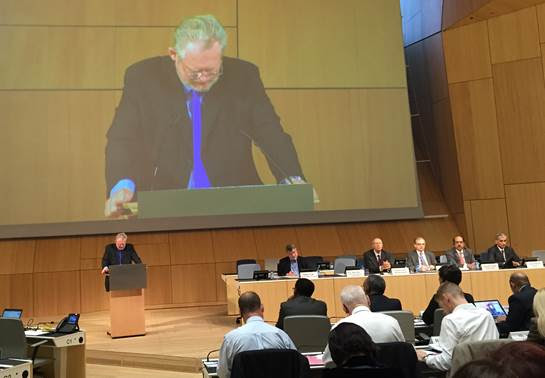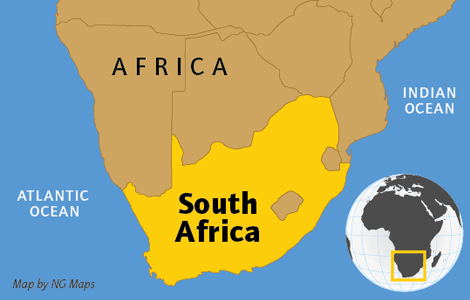Fuente: South Centre /8 de abril de 2016
Keynote Address by Rob Davies, Minister of Trade of the Republic of South Africa, at the WIPO Conference on IP and Development (April 2016)
I want to start by situating my remarks on IP protection in a wider historical view that all countries that have succeeded in breaking out of poverty and underdevelopment – beginning with Venice in the middle ages, through Britain in the 18th and 19th century, to the Asian newly industrializing economies, and to China and India today – all of them without exception have done so by nurturing a cluster of industrial activities characterized by increased, rather than diminishing, returns.
Nurturing has involved the identification and targeting of appropriate value adding activities, the deployment of public and private resources to support innovation, entrepreneurship and infrastructure development as well as the judicious use of tariffs and other forms of protection.
This understanding has informed South Africa and indeed Africa’s recognition that its sustainable development will, in great measure, be dependent on pursuing structural transformation of its economies through industrialisation.
Let’s step back for a moment: Over the last decade or so, Sub-Saharan African countries have shown impressive economic growth, outpacing advanced economies. That growth rate has also been above the average for all emerging and developing economies and while only Asia has recorded higher growth rates, the differential has been narrowing.
Seven of the top ten fastest growing economies in the global economy are African and Africa now offers the highest return on investment of any region in the world economy. Africa’s abundant natural resources, the growing consumer power of Africa’s emerging middle class and favourable demographics offer enormous potential for sustainable economic growth and development across the continent.
While all this has been positive, and suggests prospects for future growth and development are much improved, Africa’s growth path has been based primarily on commodity exports, particularly to Asian countries, as well as by strong consumption based on the rise of middle class consumers.
There is a now widening consensus among African government and business leaders that growth on this path will not be sustainable in the longer term and that, to place the continent on a firmer footing towards sustainable development, Africa will need to pursue structural transformation of its economic base and build a more diversified productive capacity, through industrialisation. The recent dramatic decline in a range of commodity prices, many of which are the mainstay of African production for export, should only redouble our efforts at industrialisation and economic diversification.
South Africa’s Industrial Policy Action Plan
In South Africa, the Government has chosen a growth and development path that prioritises industrial upgrading in more labour intensive sectors to generate sustainable and decent employment. Upgrading South Africa’s industrial base in this way and encouraging the production and export of more sophisticated value added products, require purposeful intervention in the industrial economy aimed at achieving dynamic, competitive advantages.
Our National Industrial Policy Framework and Trade Policy and Strategic Framework depart from the view that deliberate policy interventions are needed to address impediments to economic diversification, and that specific measures are considered on a sector-by-sector basis, dictated by the needs and objectives of sectoral strategies.
Two dimensions of this process may be instructive for the remarks I will make later more directly on IPR and economic development. First, our sectoral work is grounded in a ‘self-discovery’ process of engagement between government, business and labour, through which we collectively identify the specific measures and programmes needed to advance industrial development.
Second, our approach to tariff policy is one in which we make no a priori presumption of the benefits or costs of maintaining either low or high tariffs. Instead, tariff setting is assessed on the evidence obtained at firm and sector levels through detailed investigations that consider the impact of proposed tariffs on, amongst other things, economic output and employment across the value chain.
In short, tariff setting is evidence-based and the product of intensive consultations between affected stakeholders. Of course, the upper limits for tariffs are set by the binding obligations South Africa has undertaken in the WTO and in bilateral trade agreements.
IPR and Economic Development
If the proposition that industrial development and structural transformation are necessary for sustainable development in many developing countries is correct, a relevant question is whether and how IP protection can be designed to support these objectives.
Considerable work has been undertaken in the relationship between IPR and economic development, including excellent work under the aegis of WIPO. In our reading of this literature, it seems clear that the international community is far from reaching a convergence on the question. Indeed, this field of work remains a site of contestation.
While few policymakers, commentators or academics deny the importance of IP protection and enforcement, the questions revolve around nature of the standards that should be implemented and enforced, and whether this changes over time as countries industrialize and develop.
Strengthening and extending IPR regimes and enforcement are strongly advanced by countries at the cutting edge of innovation globally. One may recognise that, for those countries, it is of strategic value to use IP protection as a mechanism to preserve the rent-generating and other advantages that arise from the technological capabilities built up by their firms. In this sense, such an approach could well be understood as a de facto industrial policy and there is a compelling argument to be made that this should be balanced by approriate diffusion policies in catching-up countries.
In any case, in the history of development and ‘catching up’, successful strategies always appear to have involved ‘emulation’ that requires measures that are targeted at acquiring knowledge in increasing returns activities. Furthermore, all successful catching-up episodes occurred under condition of weak IPR regimes that permitted easier knowledge acquisition and imitation. During the 19th Century, today’s advanced economies used the IP system and the flexibility it accorded in a judicious manner as they pursued their industrialization. This allowed those countries to strengthen their IP regimes at their own pace, and in support of overall progress in their economic development.
We may recall that Switzerland did not institute a national patent law until 1888. When the law was introduced, it was narrow in scope and did not provide protection to chemical inventions. It is argued that this allowed domestic chemical industries to develop imitative capacity. Today, Switzerland boasts some of the most innovative and accomplished chemical and pharmaceutical industries in the world. Similarly, countries such as Germany, Switzerland, France and Japan only introduced pharmaceutical product patent protection in the 1960s.
Only a handful of countries have made the transition from “developing” to “developed”. If one looks at the performance of the “Asian Tigers”, it is clear that they relied on a heterodox of policy measures to achieve industrialisation. For example, Korea relied less on FDI and initially acquired most of its technology through trade, reverse engineering and technology licensing. When it became competitive, its own companies began to invest heavily in R&D to develop their own innovative technology.
Singapore followed a different model. Singapore has long had an open trade regime and depended very much on FDI for its technology. While generally working with market principles, the government was heavily involved in attracting the kind of foreign investment that it believed would bring cutting edge technology that could underpin wider economic development. The development story of Singapore may be characterised as one of moving quickly from cheap unskilled labour to a knowledge-based economy. The government continued to invest heavily in education, skills and, in time, research and development. It has now become an important regional hub for many knowledge-based services.
More recently, we see that India pursued an alternate path in so far as it has taken advantage of the transitional provisions in TRIPS to develop a globally competitive pharmaceutical industry. By so doing, India has been able to increase global output and competition, thereby enhancing economic welfare. In the process, the industry in that country has become increasingly innovative and has sought to make greater use of the patent system.
The essential point of drawing on these examples is simply to reiterate that countries have taken different paths in pursuing economic development and they have used IP protection in different ways and at different times to support their development effort.
Some Theoretical and Empirical Questions
Opponents of strong IPR typically raise concerns that stronger IPR raises the costs of protected goods and reduces the accessibility of innovations. They often argue that a stronger IPR regime is costly including with respect to the fact that stronger patents confer a greater degree of monopoly power on the patent holder that are often foreign-based multinationals.
Opponents also contend that stronger IPR regimes can retard industrial development, as weak IPR can function as a kind of infant industry policy, allowing indigenous firms to learn from, absorb and experiment with foreign technology at low cost. Said differently, establishing a strong IPR regime prematurely limits the diffusion of innovative technology more widely and by imposing high prices for patent-protected goods, lower consumer welfare.
The role of patent protection in promoting innovation has also been controversial. There are arguments that patents are unlikely to foster innovation in developing countries at early stages of industrialization. The evidence on the extent to which patent protection contributes to encouraging innovation is, at best, inconclusive. This point is of particular relevance to industrial policies since some studies contend that other factors, notably ‘first mover’ advantages, are more decisive in promoting innovation.
Proponents of stronger IPR regimes, by contrast, suggest that IPR protection fosters innovation in reforming countries. They also argue that stronger IPR facilitates transfers of technology to reforming countries, increases foreign direct investment (FDI), and spurs industrial development. They point to the growing literature that shows a correlation between IPR reform and industrial development and argue that the concerns that a shift to stronger IPR would undermine industrial development are overstated.
As the policy debate unfolds, there nevertheless seems to be a wide acceptance that research on these and related topics must be extended and deepened if we are to have a better grasp of the complex relationship between IPR reform and FDI flows, technology transfer and industrialization.
While generalized conclusions can offer insightful guidance, it may not be applicable at all times to all countries. If that is the case, it is vital that research is undertaken in a manner that is context specific, taking into account the level of development of the country under consideration, with a clear focus on its industrial profile and capabilities.
In countries at an early stage of industrialization where technologically mature technologies may be embedded in equipment, strong IPR regimes may be unnecessary. As the manufacturing production of a country becomes more diversified and higher value added is sought (e.g. fine chemicals, electronic equipment and consumer goods) IPRs may growingly narrow down the freedom to operate in the absence of a license authorizing the use of the protected technologies and designs. Where countries begin to develop their own innovation through greater investment in R&D, the demand for stronger IPR protection is likely to grow in tandem.
What are we to make about these complex, varied, and sometimes divergent accounts of the historical, theoretical and empirical dimensions of the question of IPR and industrialization?
I would summarize the answer as follows: First, historically, different paths have been taken to economic development and the IPR protection provided. Second, IP protection has been strengthened and evolved in different countries over time. Third, there is no unambiguous evidence that stronger IPRs foster industrial development, and countries may require different approaches and policies depending on their level of industrial development.
This all suggest the need for a cautious approach to the reform of IPR. It also suggests the need to strengthen capacity to assess the costs and benefits of IPR reform in the specific contexts where the reform is being considered or undertaken. Reform should be based on robust evidence and should be the product of extensive consultations with affected sectors, industries and firms. There are no simple answers or short-cuts.
TRIPS and Flexibilities
Having made all these points, it is also clear that as many developing countries pursue industrialization, they do so in the context of an international IP regime that is more constrained than it was in the 19thcentury. The Agreement on Trade Related Aspects of Intellectual Property Rights (TRIPS) establishes extensive standards of IP protection that are almost without exception legally binding on all WTO Members.
While developing countries are committed to implementing and enforcing these standards, it is also clear that the TRIPS Agreement contains flexibilities that can be exploited to craft a greater developmental role for IP protection in respect to industrialisation.
Patents are likely to impact technologically dynamic sectors where domestic value added is higher as compared to sectors where more mature technologies predominate. Therefore, as countries pursue industrialization, we need to explore how best patent regimes can be designed to expand the opportunities for access and diffusion of technology.
As noted, whether or not IPRs in fact generate net benefits or costs to any particular country will depend on its productive profile, its R&D infrastructure, and the extent to which policy space is preserved to adapt the IPRs regime to local conditions and needs. In that context, governments retain an important role in ensuring that patentability standards such as the requisite level of inventiveness are appropriate and rigorous in order to avoid the introduction of patents that unnecessarily stifle local innovation and production.
Compulsory licenses are another avenue of policy flexibility permitted under the TRIPS Agreement that may be used as an instrument to promote domestic production where voluntary licenses are not available on reasonable commercial terms. There are several examples around the world where compulsory licenses were issued and employed successfully to ease access to affordable medicines.













 Users Today : 24
Users Today : 24 Total Users : 35460233
Total Users : 35460233 Views Today : 29
Views Today : 29 Total views : 3418924
Total views : 3418924